To learn more about programming education at schools we researched on exisiting curriculum design from the U.S. schools and Chinese extracurriculum institutes. This is because that we hope to have a holistic understanding of the current competitiors. The team analyzed the context, knowledge taughts, curriculums, goals and standards, assessement methods, and their alignment better compare.
Given a rather open-ended problem space, we spent the first month on research and analysis to narrow down our scope. We did a deep literature review on the current teaching and goal setting methods for K-12 programming learning, several interviews with key stakeholders, and field research to know how programming classrooms and programming education developers were conducted.

We started to look into who is involved and how they interact in order to discover problem scopes in their space. This final stakeholder map covers teachers and students as the direct users, then school principals, parents, and the Cross-Domain system maintainers as the indirect users.
Students and teachers are identified as the direct users of our product, which serves as an additional learning and teaching assistant tool of the existing online curriculum or learning platform. The student is supposed to receive more efficient real-time support from our product, whilst the teacher leverages its assistance to better and more efficiently adapt their teaching to a larger number of students.
We interviewed six students to learn about their class flow and current class experience. There are two typical class flows, which differ with respect to whether pre and post-class tasks are assigned. However, despite some individual nuances in the curriculum structure, these two types share the same flow during the in-class session, which both consist of lectures and hands-on practice.
Therefore, we merged them into one general class flow to represent an ideal situation shown as follows.
Teacher prepare pre-class materials before the class
Students learn pre-class materials before the class.
Teacher teaches concepts and demonstrates procedural knowledge.
Student ingage int the lecture and raise hand to ask questions
Teacher walk around the classroom to monitor and provide help.
Students practice what they’ve learned, either in a team or individually.
Teachers need to review students’ performance and gain feedback to make adjustments to the next class.
Students need to finish their incompleted in-class tasks and finish homework.
We put the collected information and insights back into several types of users and built 5 personas: 3 for teachers and 2 for students. As the map shows below, teachers are varied in their teaching goals. In specific, teachers differ on the student groups they focus more on and the willingness to adapt their teaching.
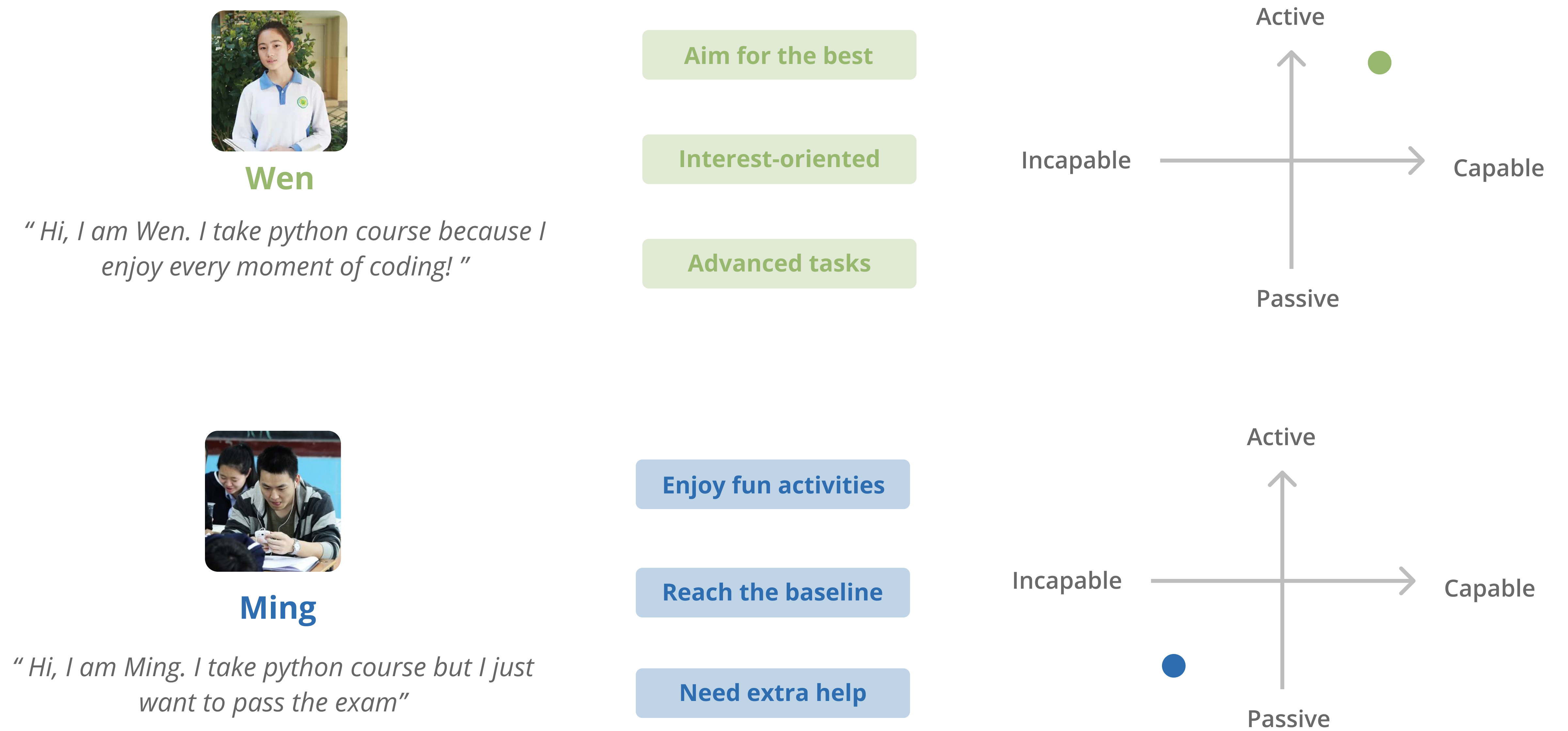

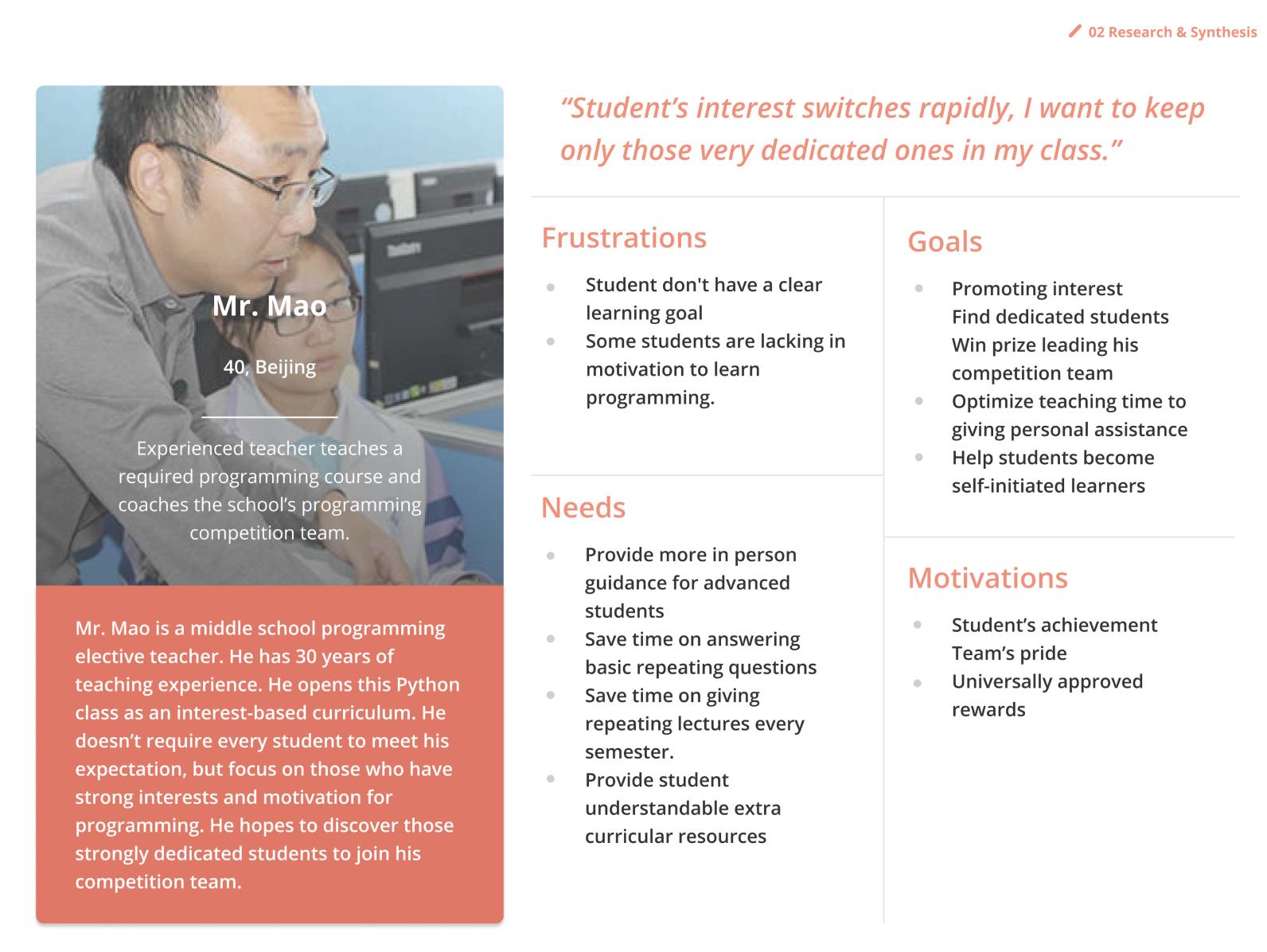
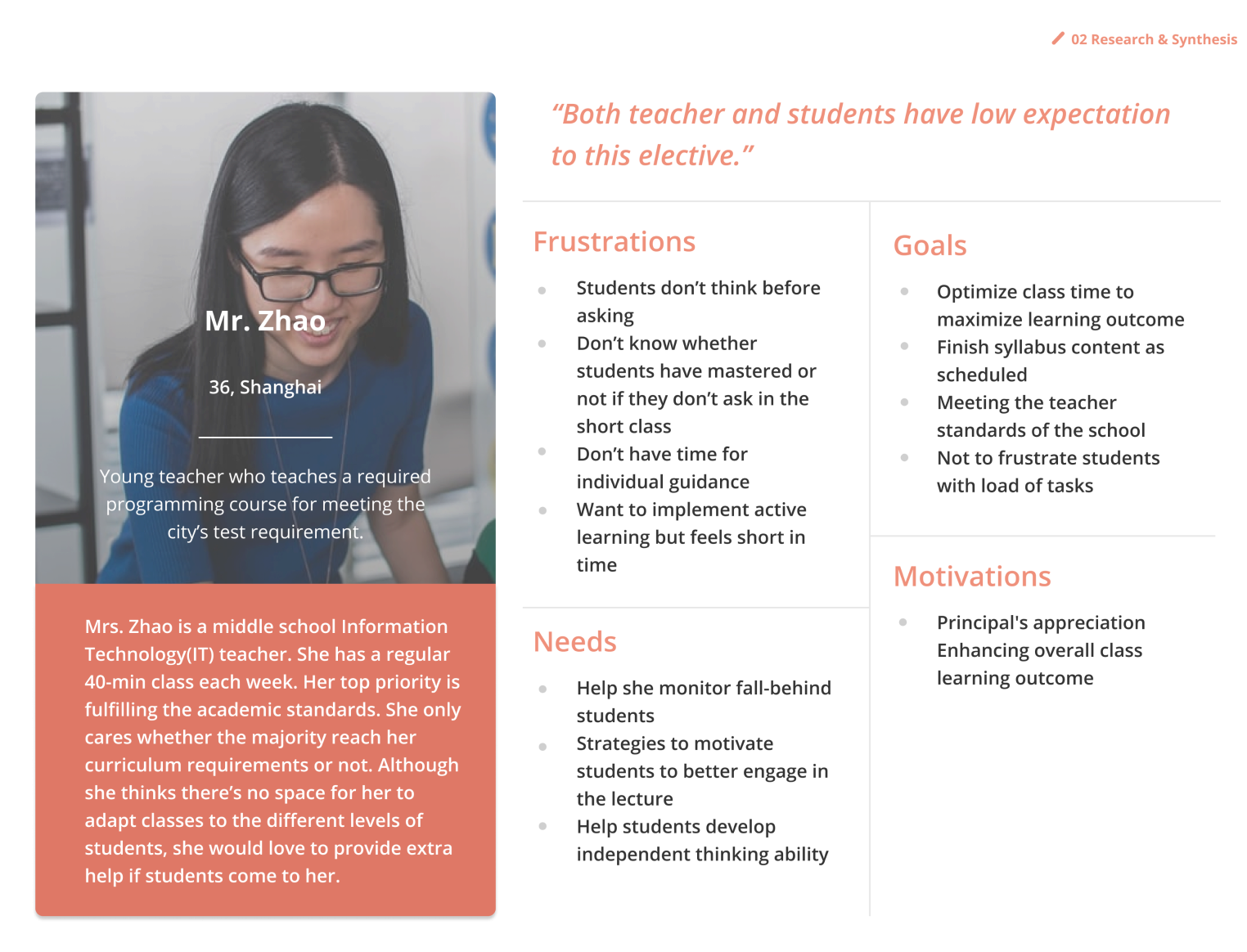
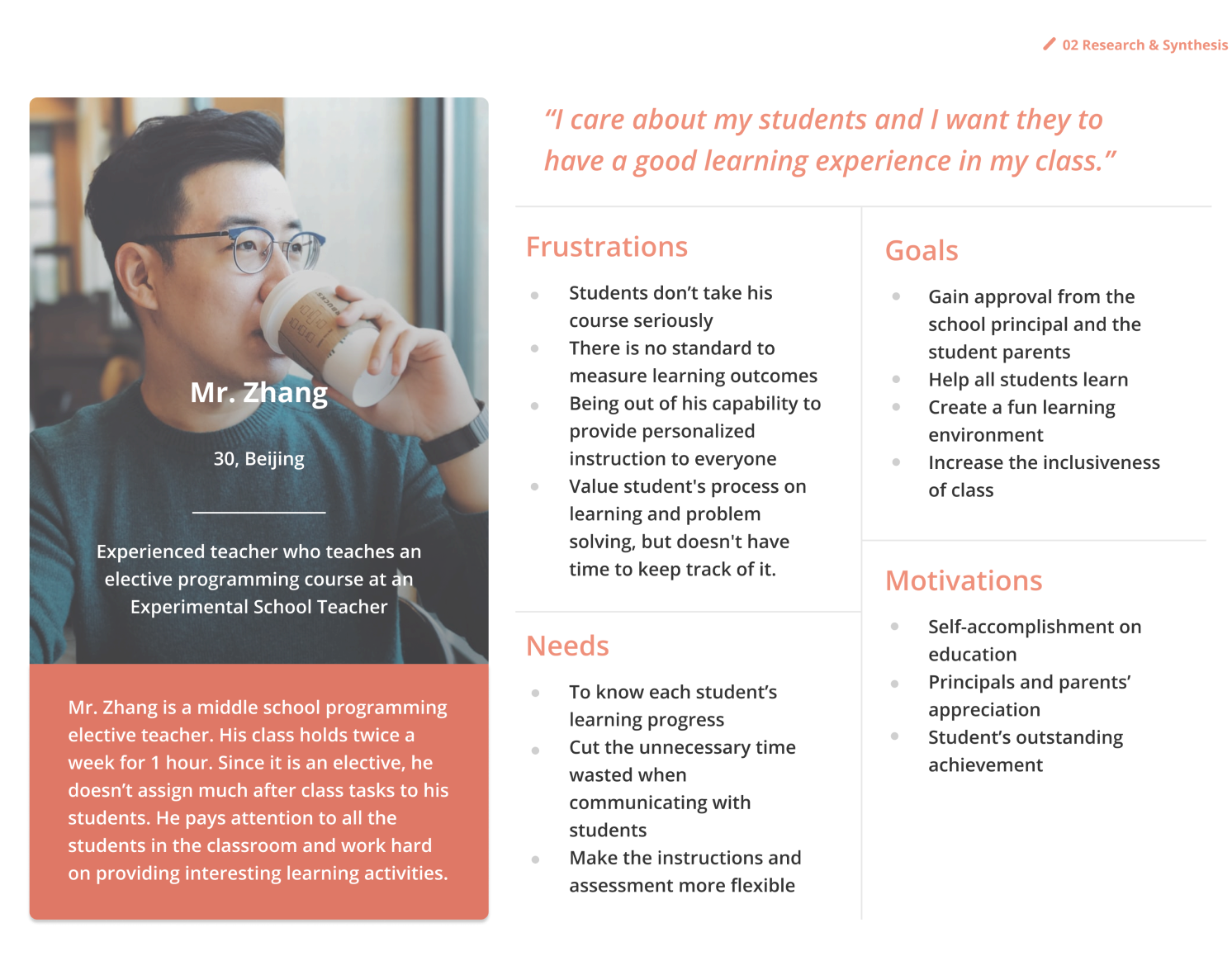
From Feb to March, when tring to narrow scopes, we got to know how the current status of programming learning is like to middle school students. From March to April, we utilized multiple models and concluded various opprtunities that helped us understand the preferred status in students learning. Interviewing multiple users and doing more research, we realized that status can be measured from two aspects: adaptivity and motivation.
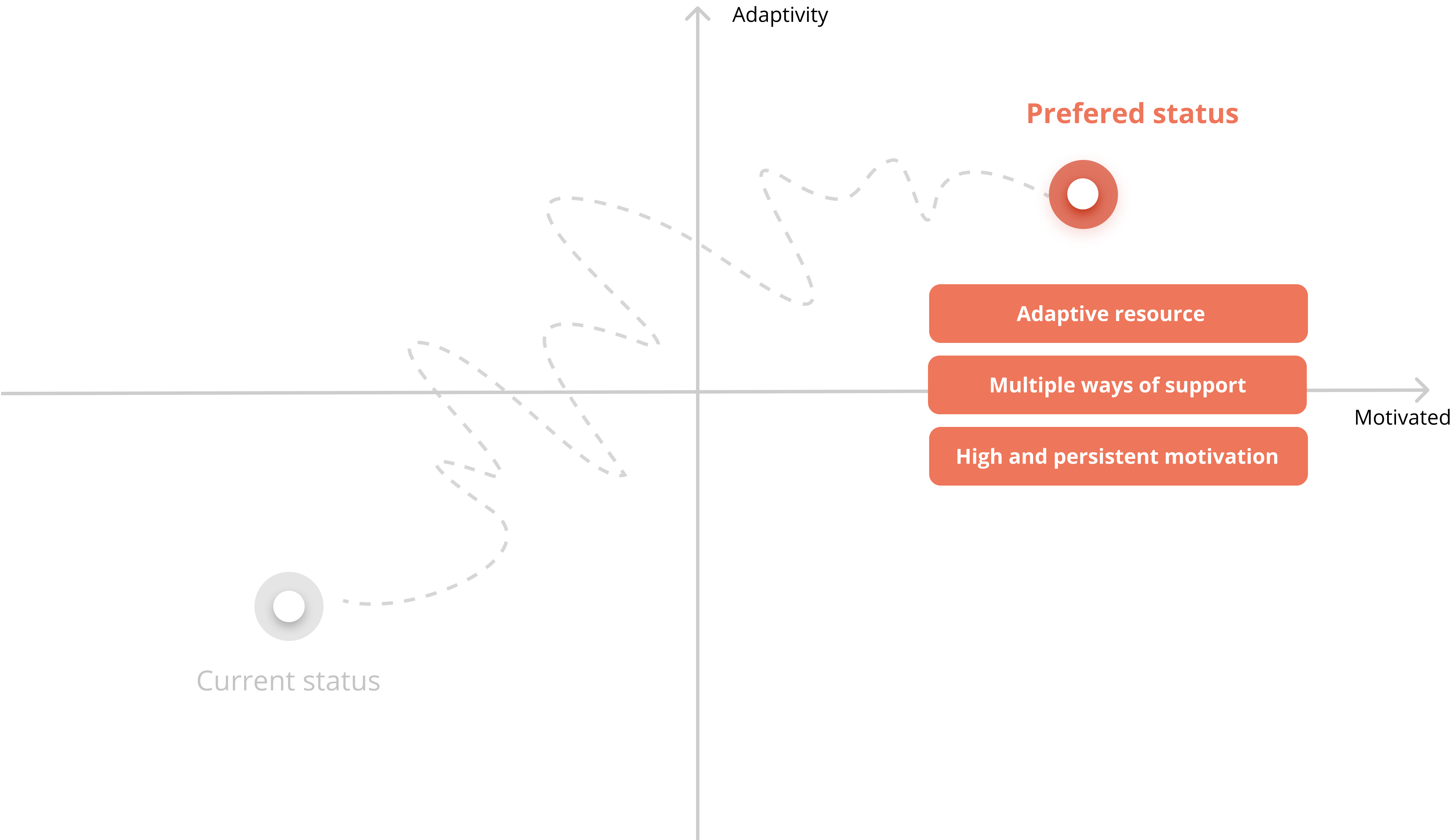
Since we have already found out the current status and identified the preferred status, we identified some gaps with regards to students and teachers.
